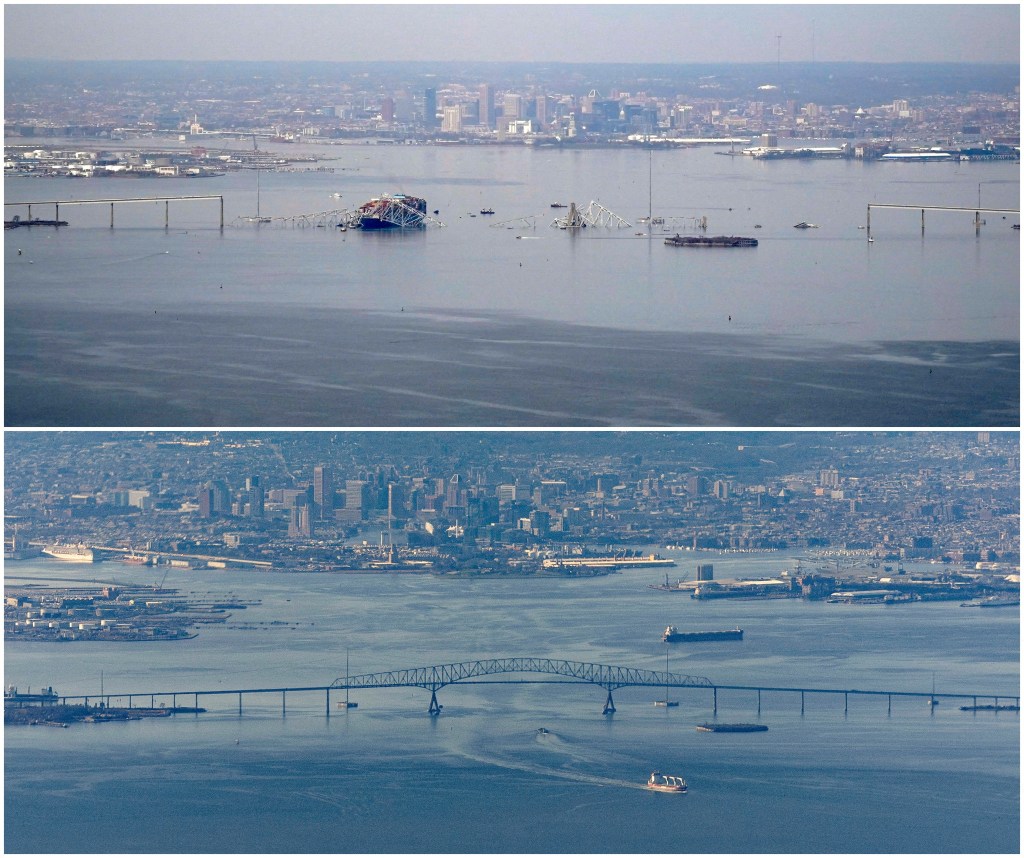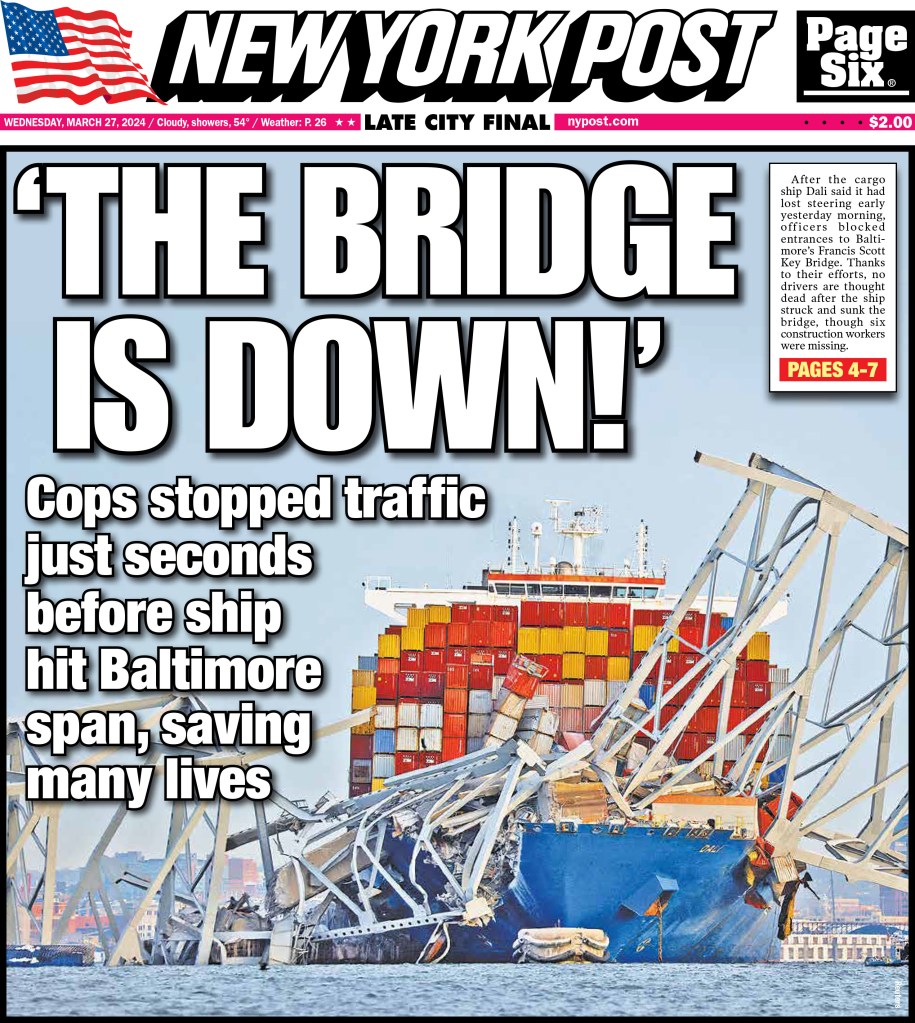Why the Baltimore Key Bridge crumbled so spectacularly after it was hit by cargo ship
The dramatic collapse of Baltimore’s Francis Scott Key Bridge after being struck by a container ship as large as the MV Dali was inevitable, an engineering expert revealed.
The Singapore-flagged vessel rammed into one of the bridge’s pivotal points around 1:30 a.m. Tuesday, causing the nearly 50-year-old steel structure to crash into the Patapsco River, footage shows.
Ben Schafer, a structural engineering professor at Johns Hopkins University, said that he doesn’t believe most bridges would have withstood the impact of a modern cargo ship.
“Fifty years into its design life and with its foundation, I don’t think there’s many bridges that are going to survive container ship head-on to one of its major supports directly as we saw this morning,” he told WTOP.
Follow The Post’s live updates for the latest news out of the Baltimore bridge collapse
“It’s a sound bridge design and had been used in other locations,” Schafer said, noting “there’s no indications of problems with it over time.”
The 1.6-mile bridge, constructed in 1977, crumbled almost immediately after it was struck by them MV Dali, sending the roadway and several cars into the chilly waters below. The massive container ship, which can hold 130,000 tons of cargo and supplies, simply overwhelmed the bridge’s protective measures.
Everything you need to know about the Francis Scott Key Bridge's collapse in Baltimore
- The Dali, the Singapore-flagged container ship that smashed into the Francis Scott Key Bridge in Baltimore and destroyed it early Tuesday, reportedly lost propulsion and tried to warn officials that it was going to crash, according to a report.
- Six people were unaccounted for, according to authorities. Two people were pulled from the river by rescuers.
- Seven vehicles were missing after falling from the 1.6-mile-long span. Officials are using sonar technology to find the vehicles.
- Videos show power on the ship flickering off, and then on again, shortly before the crash. Watch footage of the bridge’s collapse here.
- A Baltimore resident described how the horrifying collapse of the Francis Scott Key Bridge early Tuesday caused his entire house to feel like it was falling down.
- The Dali was also involved in a collision while leaving the Port of Antwerp, Belgium, in 2016.
Follow along with The Post’s coverage of the Francis Scott Key Bridge collapse in Baltimore.
“Container ships have changed a lot since the 1970s. They’re bigger and bigger and bigger. When you see the images now, the container ship is as wide as the bridge was tall,” Schafer said.
“Certainly, I do think if we’re going to have lessons learned, it’s going to be around that kind of port maintenance and the way we handle getting the ships in and out when it’s going through critical infrastructure like this,” the professor added.
Transportation Security Pete Buttigieg offered a similar take, saying Tuesday afternoon that he does “not know a bridge that has been constructed to withstand a direct impact from a vessel this size.”
The MV Dali lost power and its crew issued a mayday warning moments before the collision, officials said. Videos show the ship’s lights flickering as it headed toward the bridge.
Six people, who were all part of a construction crew that was patching potholes in the road, were reported missing and are presumed dead, Six other workers were presumed dead Tuesday evening, Jeffrey Pritzker, executive vice president of Brawner Builders, told the Baltimore Sun.
The Port of Baltimore is the United States’ leading import and export site for cars, light trucks, sugar and gypsum, setting a record with 52.3 million tons of foreign cargo transported in 2023.

















